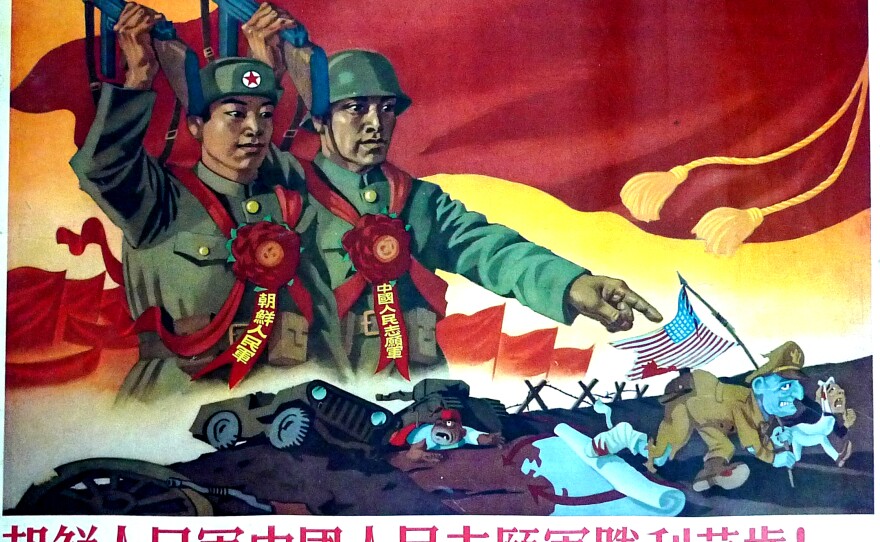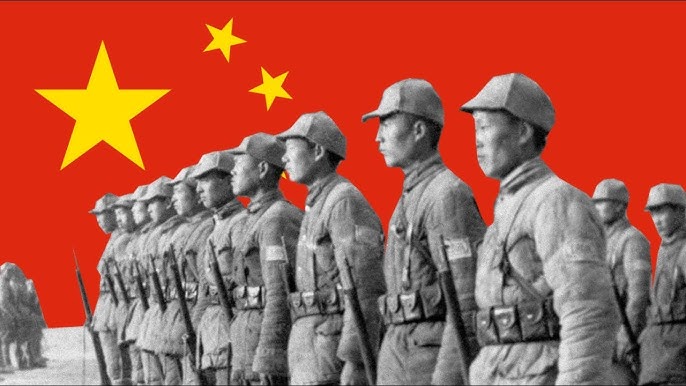中國軍隊對智慧化戰爭實踐演進的探索
現代英語:
Recent global regional wars and military conflicts demonstrate that modern warfare practice is gradually evolving toward an information-based, intelligent form. Facing a new wave of military revolution, to fully explore the evolutionary laws of intelligent warfare practice, we need to further clarify the fundamental underpinnings of this evolution, fully assess the technological advantages of warfare practice, and identify the key challenges driving the current evolution of warfare practice.
The evolution of intelligent warfare practice requires the support of social practice foundation
As an important part of social activities, military activities have a very close relationship with social activities. Similarly, as a specific form of military activities, war practice cannot be examined in isolation from the larger system of social practice.
The level of development of productive forces determines the height of practical evolution. Warfare is part of human social practice and always aligns with the level of social production. How humans conduct material production often determines how they organize war; the way humans conduct warfare reflects their mode of production. Engels argued that victory through violence is based on the production of weapons, which in turn is based on the entire production system. Therefore, with the development of productive forces, the means of warfare are also constantly evolving. Just as it was impossible to find a weapon from the information age in the cold weapon age, it is difficult to use typical cold weaponry on the battlefields of the information age. Even daggers produced in the information age differ from those of the cold weapon age. From the alloy composition to the forging and molding technology, they embody the technological advancements of the information age and are weapons of the information age.
Changes in the production relations system influence the outcomes of practical evolution. As a special form of social practice, the development and changes in war practice closely revolve around the direction and speed of social practice evolution. In other words, behind every transformation in war practice, a similar social transformation is also taking place simultaneously, and success requires the completion of a systemic transformation of production relations as a whole. Marx insightfully pointed out that in all social forms, a certain type of production determines the status and influence of all other types of production, and thus its relations also determine the status and influence of all other relations. This is a pervasive light that obscures all other colors and alters their characteristics. Concepts of war practice that are too far ahead of their time often struggle to succeed due to a lack of hardware and software support that aligns with the development of contemporary social practice. For example, the concept of joint operations was unlikely to emerge in the era of cold weapons. Even if military theorists had anticipated this concept a priori, they would have been unable to apply it in practice. Modern joint operations, however, are in fact a microcosm of large-scale socialized joint production in military practice. Therefore, the design of war should return to social practice itself, seeking inspiration and reflection from it. Ignoring the overall level of development in production relations and prematurely designing war scenarios for the intelligent era can lead to scenarios and objectives that become sci-fi, game-like, and fictional.
The winning effect of intelligent warfare practice requires further testing in war
The goal of the evolution of warfare practice is always to enhance operational superiority and achieve victory. However, this does not mean that the evolutionary process will naturally lead to this goal. Sometimes, in the early stages of a change in warfare practice, the effectiveness of victory is not obvious, and the effectiveness of various combat methods must be continuously evaluated during the development process.
A first-mover advantage does not guarantee victory on the battlefield. While it’s undeniable that whoever first masters the latest winning strategies will be able to seize the initiative on the battlefield through technical and tactical advantages, this first-mover advantage does not necessarily lead to ultimate victory. While a first-mover advantage does have a significant impact on winning wars, the history of warfare demonstrates that technical and tactical advantages can be offset by mistakes or disadvantages in other areas. In World War II, the German army, which was the first to master the winning strategies of mechanized warfare, gained an advantage in the initial battles on the Western Front in Europe and the Eastern Front between the Soviet Union and Germany. However, this initial advantage was quickly eroded by strategic errors and overall disadvantages.
First-mover advantage rarely creates an absolutely overwhelming advantage. In the era of globalization, human social practices are closely interconnected, and technological innovations from one country or region quickly spread abroad. Therefore, technological and tactical advantages in the intelligent era are often short-term and localized, making it difficult for a single country or region to establish a long-term, global, monopolistic lead. Currently, the rapid development of network communications technology is bringing humans closer than ever before. Similarly, in the practice of intelligent warfare, various advanced reconnaissance methods will continue to penetrate the secrecy of both sides. Sometimes, after the emergence of a new weapon, countervailing weapons or methods will quickly be invented.
The advantages of intelligence don’t necessarily create optimal combat situations. Currently, the intelligence content of war practice has yet to become a decisive factor in determining victory or defeat. Currently, the practice of intelligent warfare is still in its infancy. The mechanisms of victory in war require in-depth research, many equipment require further development and verification, and various experimental pre-war practices require further testing and improvement. In comparison, the practice of informationized warfare is relatively mature, with various types of weapons and equipment, as well as supporting operational and tactical means, becoming more stable. This leaves much room for the application of informationized warfare methods. Therefore, as war practice evolves, we must continuously innovate the means of intelligent warfare practice while fully tapping the operational potential of informationized warfare practice.
The development and transformation of intelligent warfare practice requires the integrated promotion of people and technology
There are many factors that drive the evolution of intelligent practice. On the premise of clarifying development support and evaluating the effectiveness of combat methods, it is necessary to comprehensively analyze various contradictions, grasp the key points, distinguish the main points, and highlight the leading role of people.
Technological change is the most dynamic factor. Science and technology are core combat capabilities. As the most revolutionary factor in the development of war practice, every major scientific and technological innovation has a profound impact on the nature of warfare. Engels once pointed out that once technological advances can be applied to military purposes and have already been applied to military purposes, they immediately and almost forcibly, and often against the will of the commander, lead to changes or even revolutions in combat methods. However, equating the intelligent military revolution with the high-tech revolution, leading to an overemphasis on intelligent technology and an excessive pursuit of the development of various intelligent weapons, undoubtedly fails to correctly grasp the essence of the evolution of intelligent warfare practice. While technology plays an important role, it is not the only decisive factor; culture, politics, and individuals themselves also play a role. In his book A History of World Wars, British historian Jeremy Black repeatedly reminds readers not to fall into the trap of technological determinism and simply attribute all major changes in military history to technological innovation.
Institutional innovation is a challenge. To fully leverage the combat effectiveness of equipment in the evolution of intelligent warfare, all operational elements must be integrated into a unified system, integrating ideology, combat methods, organizational structures, education and training, and military technology. Renowned military theorist Dupuy argued in his book The Evolution of Weapons and Warfare that no matter how much a weapon’s lethality improves, its compatibility with military tactics and organizational structure is far more important than its invention and adoption. Only when the advantages of equipment are integrated into scientific organizational structures can optimal combat effectiveness be achieved. Historically, Britain was the first country to possess aircraft carriers and tanks, but it was not the country that successfully led the mechanized warfare revolution. While the most easily achieved transformation in warfare practice is the upgrading of weaponry and equipment, comprehensive innovation in warfare practice requires holistic innovation at the institutional level to achieve a comprehensive effect. A military that only upgrades equipment without institutional reform will struggle to develop sustained and effective combat effectiveness and cannot truly lead a revolution in warfare practice.
The integration of people and weapons is crucial. People are the primary actors in the practice of warfare. In the era of intelligent warfare, the decisive role of people in warfare remains unchanged and remains the driving force behind its evolution. From the perspective of the two major categories of people and weapons, military technology falls more heavily on the “weapons” side, while other elements of warfare, such as military strategy, organizational structure, strategic tactics, and combat methods, fall more heavily on the “people” side. The more advanced high-tech equipment becomes, the more it requires human expertise to master and utilize it. In the era of intelligent warfare, greater emphasis must be placed on the importance of wisdom and strategy, relying more heavily on individuals equipped with the concepts and thinking of the intelligent era to direct and design operations. Therefore, promoting the evolution of warfare requires focusing on people as the decisive factor, fully integrating “people” and “weapons,” vigorously developing joint education within the context of intelligent warfare, and focusing on cultivating scientific and technical personnel and command personnel who meet the requirements of intelligent warfare.
現代國語:
近年來的世界局部戰爭和軍事衝突表明,現代戰爭實踐正逐步朝向資訊化智慧化形態演變。面對新一波軍事革命浪潮,為充分探究智慧化戰爭實踐演進規律,需要進一步釐清戰爭實踐演進的基礎支撐,充分評估戰爭實踐的技術優勢,找準推動當前戰爭實踐演進的重難。
智能化戰爭實踐的演進需要社會實踐基礎作為支撐
作為社會活動的重要組成部分,軍事活動與社會活動有著十分密切的關係。同樣,作為軍事活動的一種具體形式,戰爭實踐也不能離開社會實踐的大系統去孤立地考察。
生產力發展水準決定實踐演進的高度。戰爭實踐是人類社會實踐的一部分,始終與社會生產水準相適應。人類怎樣進行物質生產活動,往往就怎樣組織戰爭,人類從事戰爭的方式,反映了它們的生產方式。恩格斯提出,暴力的勝利是以武器生產為基礎的,而武器的生產又是以整個生產為基礎的。因此,伴隨生產力的發展,戰爭實踐手段也不斷發展。正如在冷兵器時代無法尋覓到一件資訊化時代武器一樣,在資訊化時代的戰場上也難以運用典型的冷兵器時代的武器。即使是資訊化時代生產的匕首,也已然不同於冷兵器時代的匕首,從合金成分比例到鍛造造成型技術,它本身蘊含了資訊化時代的工藝水平,屬於資訊化時代的武器。
生產關係系統變化影響實踐演進的結果。作為一種特殊形式的社會實踐,戰爭實踐發展變化緊緊圍繞著社會實踐演進方向和速度。也就是說,一場戰爭實踐變革背後,也同步進行著相似的社會變革實踐,需要伴隨整個生產關係的系統變革完成才能成功。馬克思精闢地指出,在一切社會形式中都有一種一定的生產決定其他一切生產的地位和影響,因而它的關係也決定其他一切關係的地位和影響,這是一種普照的光,它掩蓋了一切其他色彩,改變著它們的特點。過於超越時代的戰爭實踐設想,往往會因缺乏符合同時代社會實踐發展所匹配的軟硬體支撐而難以成功。例如聯合作戰概念很難在冷兵器時代出現,即使有軍事理論家先驗地預想到這種理念,也無法在實踐中運用。而現代聯合作戰實踐其實正是社會化聯合大生產在軍事上的縮影。因此,設計戰爭應回歸社會實踐本身,從中尋找靈感與鏡像。若忽略生產關係的整體發展水平,超前設計智慧化時代戰爭場景,將可能使場景目標變得科幻化、遊戲化和虛構化。
智能化戰爭實踐的勝利效果需要戰爭的進一步檢驗
戰爭實踐演進的目標總是瞄準提高作戰優勢和勝利效果展開,然而這並不意味著演進過程會自然指向這一目標。有時候在戰爭實踐變革初期,其致勝效果並不明顯,需要在發展的過程中持續評估各種作戰手段的效果。
先發優勢不等於戰場上的必勝之勢。毫無疑問,誰先掌握了最新戰爭制勝機理,誰就能夠憑藉技戰術優勢掌握戰場主動權,但這種先發優勢並不會必然導致戰爭最終勝利。先發優勢的確對贏得戰爭有巨大影響,但戰爭實踐發展史表明,技戰術先發優勢會被其他方面的失誤或劣勢抵消。在第二次世界大戰中,率先掌握了機械化戰爭制勝機理的德軍,儘管在西線歐洲戰場以及東線蘇德戰場的最初較量中獲得了優勢,然而這種初始優勢很快因其戰略上的失誤以及總體實力上的劣勢而被消耗殆盡。
先發優勢難以構成絕對的壓倒性態勢。在全球化時代,人類社會實踐緊密相連,一個國家或地區的技術創新很快就會被外溢傳播,所以智慧化時代的技戰術優勢往往是短期局域性的,一個國家或一個地區很難形成長期全局性的壟斷式領先。目前,網路通訊技術迅速發展,讓人類空前地彼此接近。同樣,在智慧化戰爭實踐中,各類先進偵察手段將不斷洞穿作戰雙方的保密堡壘,有時一種新型武器出現以後,其製衡性武器或手段很快會被發明創造出來。
智能化優勢未必造成最佳作戰局勢。從目前來看,戰爭實踐的智慧化含量尚未成為影響戰爭勝負的決定因素。目前,智慧化戰爭實踐尚處於不成熟的萌芽期,戰爭制勝機理有待深入研究,許多裝備有待進一步開發驗證,各類試驗性的戰爭預實踐有待進一步檢驗和完善。相較而言,資訊化戰爭實踐已相對成熟,各類武器裝備以及配套的戰役戰術手段已趨於穩定,資訊化作戰方式仍有很大應用空間。因此在戰爭實踐演進中,要在不斷創新智慧化戰爭實踐手段的同時,充分發展資訊化戰爭實踐的作戰潛能。
智能化戰爭實踐的發展變革需要人與技術綜合推動
推動智慧化實踐演進的因素很多,需要在釐清發展支撐、評估作戰方式成效的前提下,綜合分析各類矛盾,抓住關鍵、區分要點,突顯人的主導作用。
技術變革是最活躍因素。科技是核心戰鬥力。作為戰爭實踐發展中最具革命性的因素,每一次重大科技創新都會對戰爭形態產生深遠影響。恩格斯曾指出,一旦技術上的進步可以用於軍事目的並且已經用於軍事目的,它們便立刻幾乎強制地,而且往往是違反指揮官的意志而引起作戰方式上的改變甚至變革。但是,將智能化軍事革命等同於高新技術革命,以至於過於注重對智能化技術的強調,過於追求各類智能化武器的研發,無疑是沒能正確掌握智能化戰爭實踐的演進本質。科技雖然發揮重要作用,但並非起決定性的唯一因素,文化、政治以及人本身都在發揮作用。英國歷史學家傑瑞米·布萊克在《世界戰爭史》一書中不斷提醒讀者,不要掉進技術決定論的陷阱,不能簡單地把軍事史上所有重大變革都歸因於科技革新。
制度化創新是難點。為充分發揮好智慧化戰爭演進中的裝備作戰效能,需要將所有作戰要素凝聚為一個體系,將思想理論、作戰方式、編制體制、教育訓練等與軍事技術融為一體。著名軍事理論家杜普伊在《武器與戰爭的演變》一書中提出,無論兵器的殺傷力有多大提高,新兵器跟軍事戰術和編制的兼容統一,要比新兵器的發明和採用重要得多。裝備的優勢只有融入科學的組織形態,才能創造出最佳戰鬥力。從歷史實踐來看,英國是第一個擁有航空母艦和坦克的國家,但並不是成功引領機械化戰爭革命的國家。戰爭實踐變革中,最容易實現的是武器裝備的更新換代,但戰爭實踐全面創新需要在製度層面進行整體創新,形成整體效應。只有裝備更新而無制度變革的軍隊,是難以形成持久有效戰鬥力的,也無法真正引領戰爭實踐革命。
人與武器結合是關鍵。人是戰爭實踐的主體。在智慧化戰爭時代,人對戰爭實踐的決定性作用絲毫沒有改變,仍是推動戰爭實踐演進的主導。從人與武器這兩大範疇看,軍事技術比較屬於「武器」這一方面,而戰爭實踐中的其他要素,如軍事謀略、編制體制、組織結構、戰略戰術、作戰方式等則更屬於「人」這一方面。高新技術裝備越先進,越需要有人去掌握運用,智能化戰爭時代需要更多關注智慧和謀略的重要性,需要更多依靠具備智能化時代觀念和思維的人去指揮和設計。因此,推動戰爭實踐演進要聚焦人這一決定性要素,把「人」和「武器」充分結合起來,大力發展智能化戰爭背景下的聯合教育,聚力培養符合智能化戰爭要求的科技人才、指揮人才。 (沈文科 宋騰淵 岳明峰)
中國原創軍事資源:http://www.xinhuanet.com/milpro/20250313/e495926c8f4d41f8bf0350a4c5b93f8e/c888.html



